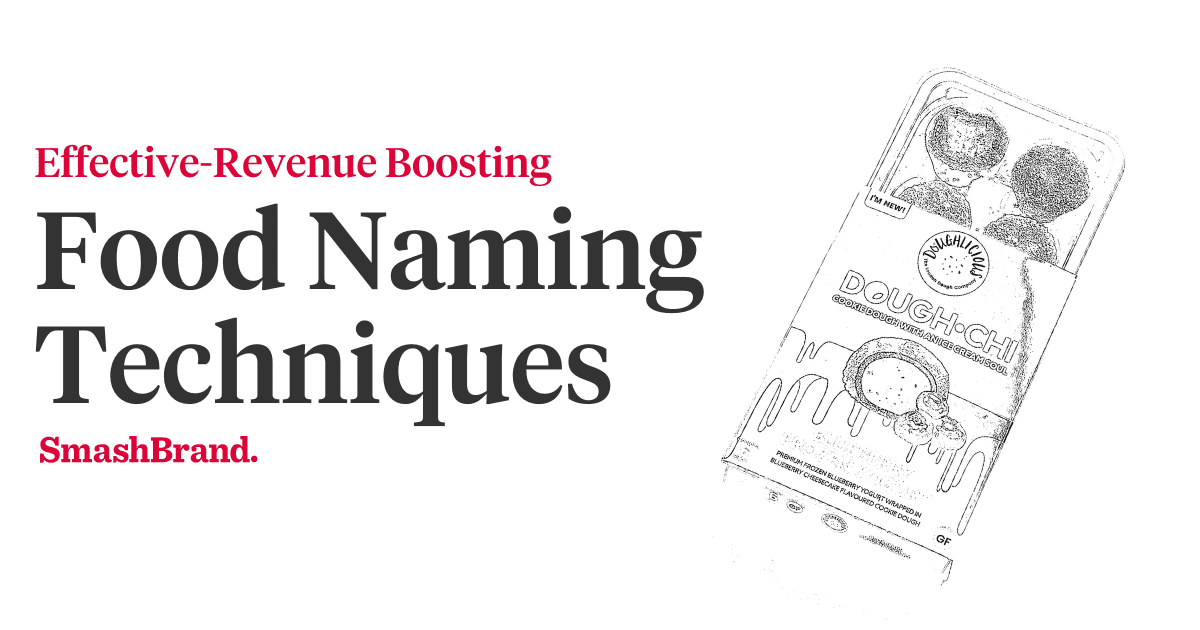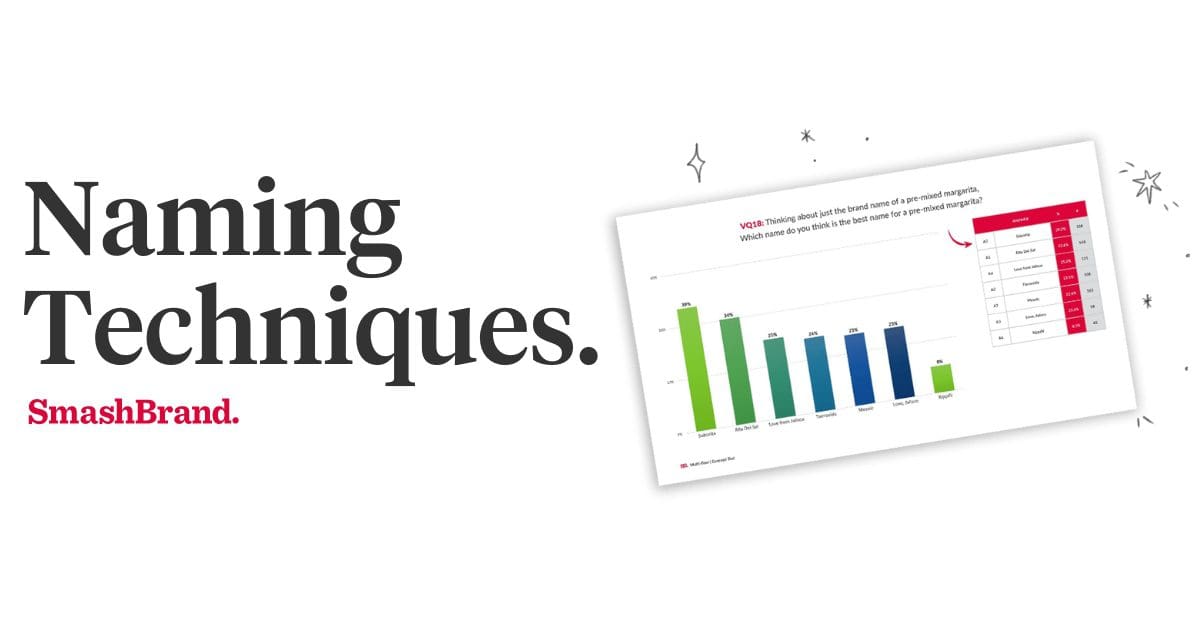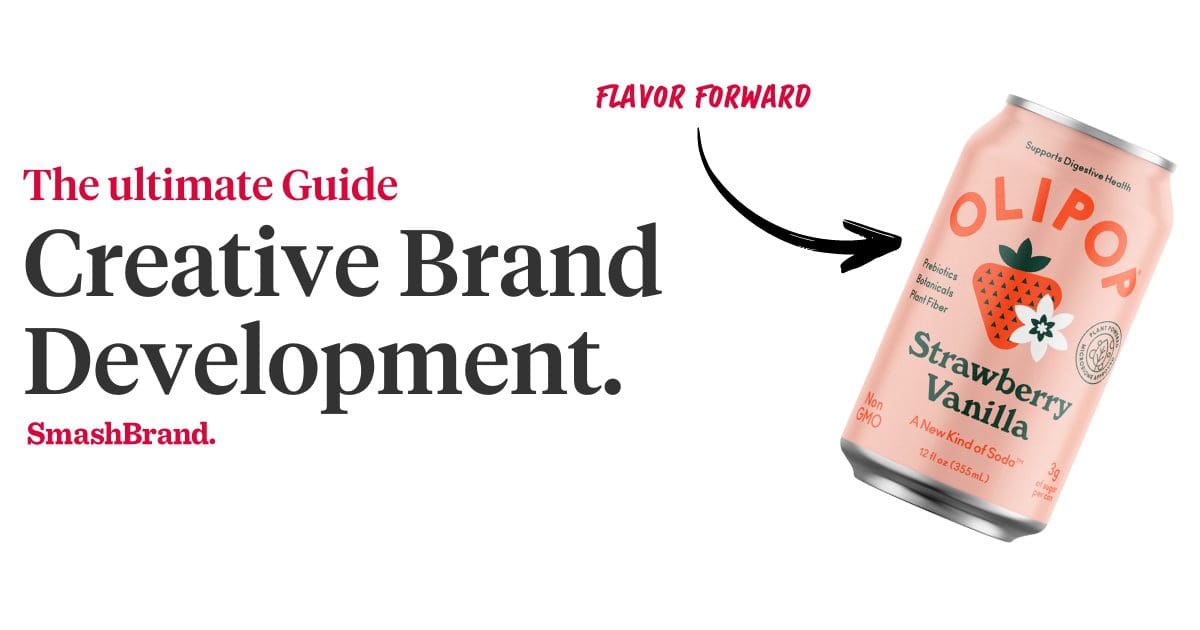Listen to This Article

You’d think that a label designer would know how to structure a label. You’d also think a qualified surgeon could operate without sewing a scalpel inside the patient. Of course, you’d be wrong.
Naturally, label design isn’t necessarily left to actual label designers. Boutique products might use a template, software download, or some other hideous source for their labeling strategies because it’s cheaper, and they don’t view the label as of exceptional importance. How we weep for these misguided souls.
Get your Hands on the SmashReport!
And enter to win a FREE brand diagnosis worth $20,000.
*The SmashReport is a monthly newsletter for FMCG and CPG brands, helping them stand out in the competitive retail marketplace.
Label Spacing
Label information real estate is precious. Although the product’s name generally gets the premium waterfront location, many designers fail to recognize that effective label design incorporates pertinent product and marketing information right next to the brand name. If your product is gluten-free, low-calorie, organic, or even contains one part of one natural ingredient, you should definitely find a place for it.
Believe it or not, the brand name doesn’t necessarily merit the largest typeface. What it does earn is the space that the eye falls upon first, which can be enhanced by using contrasting colors. When we typically read a label, our eye is drawn to the top right hand corner if the label is horizontal and to the top if the label is vertical. Hence, the information at the center of the label is usually bold, so that the eye will be drawn from where it wants to fall and onto where the pertinent information is. Color, light and shade are your dearest friends when constructing a label with limited space, and we’ll go into the specifics later. Now on to…
Label Precision
The most successful labels have an intent behind them and behind the whole presentation, not just the logo. The choice of typography for all elements must be complementary but not necessarily identical. The only real “rule” for effective label design is that everything must be specific and deliberate. Looking at some of the most fascinating and successful “busy” labels, they all have a definite structure; nothing is an afterthought.
The sizing of the typography (heck, the typography itself) is another important and often misused element in label structure, but it’s difficult to describe what will and what will not work out of hand. We may look down on some labels for having too many fonts, using inappropriate styles, being too busy. Still, those only apply to specific examples (and we’re willing to bet that those atrocities were composed without a plan). Even what one would think is the most basic principle — that the label must be readable — is still pretty flexible. We’ve seen examples of barely decipherable labels that still communicate the brand’s identity pretty darned effectively. How many of us have taken the time to read the barely decipherable Dr. Bronner’s Magic Soaps label?
You can only rely upon your own expert artistry to determine what works and what doesn’t, and that is something that doesn’t come with a downloadable label template or [shudder] prefabricated label stickers.
Label Colors
Muted colors, bold colors, or total lack of color will inform your label information placement, so use them wisely. Let’s look at an example of poor color choice for a food label, shall we? We don’t mean to imply anything about the talents of the designer of this label; we wish to state emphatically that almost every one of these label decisions is wrong. The color of the graphic, the color of the border and the graphic itself are nearly identical to the contents of the jar, making it wash out completely, making the product look wan and unappealing. Moreover, the typography and the color choices for the company logo are similarly faint and weak.
That might not be an example of the worst design in the world (that would be this); some people might think it’s pretty decent. However, it does nothing for the product or the brand itself. Nothing about that package tells the customer why he or she should buy that product instead of the hundreds of other options sitting on the shelf next to it. Moreover, the label is so inconsequential that the customer wouldn’t even notice it in the first place, which is the biggest crime. If a label is seriously offensive, it will at least get attention from snarky blogs like this, but if it’s just boring, it gets ignored by one and all.
In summation: Use your label space wisely and map out everything you want to include down to the finest detail. Don’t be scared to use interesting or disparate typography; let your sense of aesthetic balance be your guide. Don’t use bland and boring colors that blend in with the scenery — you are designing a label meant to sell your product, not picking color swatches for a baby’s bedroom. And, if you’re unsure what to do, give us a call; that’s what we’re here for.
Data-Driven Brand Development
Want a best-selling brand? SmashBrand is a brand development company for FMCG and CPG brands. From brand strategy to packaging design testing, our Path To Performance™ process guarantees a retail performance lift. Book a time to discuss your project with our team.





